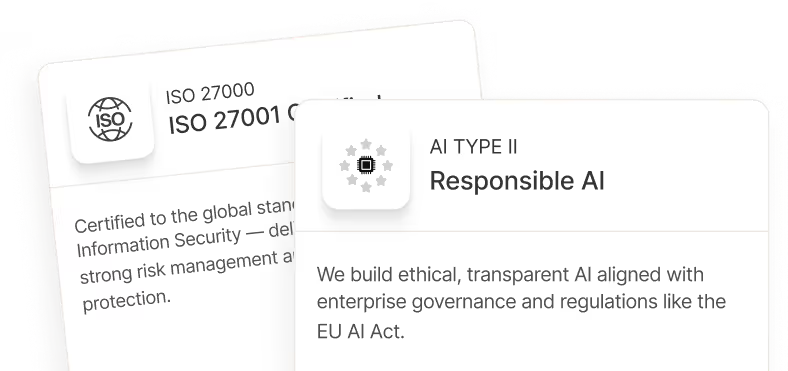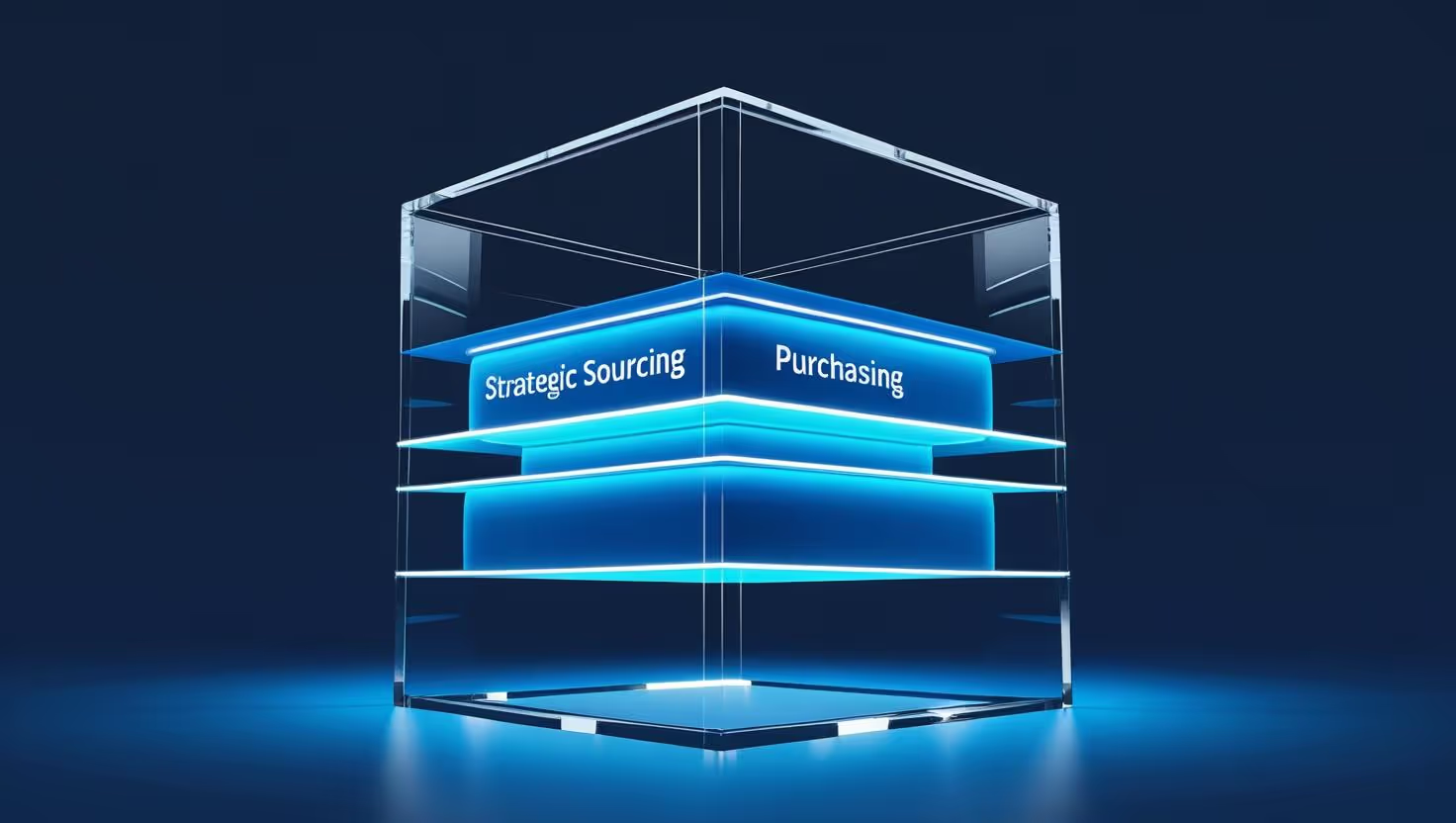Zombie Category Strategies: What They Are and How to Bring Them Back to Life

Procurement is standing at a strategic crossroads.
The global business landscape has changed beyond recognition. Supply chain shocks, geopolitical instability, resource volatility, and the rise of sustainability and digital transformation have made procurement a key driver of enterprise resilience and competitive advantage.
Yet, many procurement organizations are still running category strategies built for a different era—static PowerPoints designed for stability rather than speed.
This growing misalignment between business needs and procurement practices has become dangerous. It exposes organizations to unmanaged risks, diminishes procurement’s influence at the executive table, and wastes resources chasing narrow savings targets while competitors focus on value, innovation, and purpose.
The result? A growing population of zombie category strategies—still walking, but no longer alive.
What Is a Zombie Category Strategy?
A zombie strategy looks alive—it exists, it’s referenced, it’s technically “there.” But it has lost its connection to business reality.
In many organizations, category strategies are created once a year, locked away in slide decks, and forgotten. They keep running on autopilot, fixated on cost savings while the enterprise has already moved on to resilience, sustainability, and innovation.
As Christian Herdelt, Director of Customer Success at akirolabs, put it during our joint webinar with Sourcing Champions:
“It looks active, but it has lost its strategic pulse. It moves — but without direction or consciousness.”
Zombie strategies create the illusion of control but fail to deliver real value when disruption strikes.
How to Recognize a Zombie Strategy
Zombie category strategies rarely announce their decay; they fade quietly into irrelevance. Here are the red flags that signal your strategy may already be undead:
Process Red Flags
- Strategy hasn’t been refreshed in 12 months or more.
- Exists only in PowerPoint or Excel.
- Updates are compliance-driven, not insight-driven.
Mindset Red Flags
- Procurement remains cost-obsessed, ignoring broader value levers.
- Stakeholder collaboration is minimal and reactive.
- Strategy is treated as an annual event, not a living process.
Tool Red Flags
- No live data feeds from suppliers or markets.
- Siloed documents prevent cross-category learning.
- Lack of traceability or version control across regions and teams.
When a category strategy stops reflecting reality, it stops creating value.
Why Strategies Lose Their Pulse
A category strategy doesn’t fail overnight—it decays over time.
Three systemic causes explain most zombie strategies:
- Legacy Mindset: Procurement continues to define success by savings rather than strategic impact.
- Static Process: Annual strategy cycles cannot keep pace with quarterly market changes.
- Disconnected Tools: Fragmented spreadsheets and static presentations isolate insight from action.
In a volatile, uncertain world, what doesn’t evolve—dies.
From Zombie to Living: A Next-Generation Approach
If zombie strategies are dead on their feet, what replaces them?
The answer is the living category strategy—a dynamic, continuously updated strategy framework that evolves with business context, data, and collaboration.
Unlike static plans, a living strategy adapts in real time, staying relevant and responsive.
Characteristics of a Living Category Strategy
- Continuously refreshed: Updated quarterly or whenever market triggers occur.
- Data-driven and AI-enabled: Built on live data, scenario modeling, and predictive insights.
- Co-created with stakeholders: Developed collaboratively across Finance, Operations, and Sustainability for full alignment.
- Multi-dimensional in value: Balances cost, innovation, resilience, ESG, and risk reduction.
This approach turns category management from an annual reporting ritual into a continuous, intelligence-driven discipline.
How Living Strategies Work: The Continuous Loop
To stay alive, a category strategy must operate as a living system—continuously sensing, learning, and acting.
The Trigger → Model → Decide → Execute cycle captures this flow:
- Trigger: Detect internal or external changes that demand attention—price spikes, supply risk, new ESG regulations, or shifting business priorities.
- Model: Use scenario modeling and AI analysis to simulate “what-if” futures and assess trade-offs.
- Decide: Align with stakeholders to select the optimal response across cost, risk, and sustainability.
- Execute: Translate strategy into action plans and KPIs, monitor performance, and feed learnings back into the system.
Each iteration strengthens the organization’s agility and foresight, making procurement more adaptive and predictive over time.
The Business Case for Living Strategies
Resilience in Uncertainty
A living strategy equips procurement to navigate supply shocks and global volatility. By modeling alternative futures, organizations can act before crises escalate.
Sustainability as Strategy
Environmental and social factors are now strategic imperatives. Living strategies integrate ESG goals into every decision—transforming sustainability from compliance to competitive advantage.
Stakeholder Alignment
A living approach embeds cross-functional collaboration. When business leaders and procurement co-create strategies, execution accelerates and alignment becomes natural.
Five Actions to Revive a Zombie Strategy
- Move from Annual to Continuous.
Static, yearly reviews belong to the past. Implement trigger-based updates that respond to real-time signals such as market shifts, supplier risks, or regulatory changes. - Reconnect Procurement with the Business.
Zombie strategies die in isolation. Hold joint planning sessions with Finance, Operations, and ESG teams. Co-create category goals and embed them into a shared platform for transparency. - Redefine Value Beyond Cost.
Build a balanced scorecard measuring cost, risk, innovation, resilience, and ESG impact. Link these directly to initiatives and performance indicators. - Make It Actionable.
Assign ownership, define milestones, and monitor progress continuously. A strategy is only alive when it drives execution and measurable outcomes. - Enable Agility Through AI.
AI acts as the pulse of a living strategy. It aggregates supplier data, detects risk patterns, models trade-offs, and recommends updates before issues emerge. AI doesn’t replace human judgment—it enhances it.
Keep the Strategy Alive
Resurrecting a dead strategy is only the beginning. To keep it alive, procurement must embed continuous rhythm and visibility:
- Conduct quarterly reviews focused on business value, not compliance.
- Maintain real-time dashboards that visualize progress.
- Encourage data-driven decisions and challenge assumptions.
- Institutionalize collaboration across functions as a default.
As Robert Wilder of Sourcing Champions summarized:
“If it’s truly alive, you have it at your fingertips.”
Try It Yourself: AI-Ready Prompts to Test Your Strategy
Procurement leaders increasingly rely on AI assistants like akirolabs’ akiroAssist to maintain living strategies. These prompts reflect real, practical queries—and how to answer them effectively.
1. “What are the top three market or supplier changes that should trigger a category strategy update this quarter?”
How to answer: Review current supplier performance, commodity trends, and regulatory updates. Quantify their impact on cost, resilience, or ESG and identify which require action.
2. “Have stakeholder priorities shifted since our last strategy cycle?”
How to answer: Reconnect with Finance, Sustainability, and Operations leaders to validate evolving business goals. Document new priorities directly within your strategy framework.
3. “What new risks or opportunities have emerged that we haven’t addressed?”
How to answer: Conduct a mini SWOT or PESTLE analysis to capture emerging threats (e.g., supply concentration, regulation) and opportunities (e.g., supplier-led innovation).
4. “Model the trade-offs between global and local sourcing for this category.”
How to answer: Compare options across cost, carbon footprint, and supply resilience using scenario modeling to visualize outcomes.
5. “Which KPIs beyond cost savings should define success?”
How to answer: Include non-financial metrics such as time-to-market, supplier innovation, and ESG performance alongside traditional cost targets.
6. “What early signals indicate my category strategy is becoming outdated?”
How to answer: Define live triggers like cost deviations, supplier risk scores, or ESG compliance alerts that automatically prompt review.
7. “How aligned is our category strategy with business goals?”
How to answer: Map each initiative to enterprise-level objectives. Identify gaps and improvements.
8. “What scenarios should we model to prepare for demand or supply shocks?”
How to answer: Build at least two demand and two supply simulations. Test how each affects business outcomes.
9. “What lessons from last year’s execution can strengthen this year’s refresh?”
How to answer: Review completed initiatives, quantify ROI, and capture lessons in a central repository to inform continuous improvement.
10. “How can I make my category strategy self-updating?”
How to answer: Embed AI-driven alerts, live data integrations, and quarterly review checkpoints so updates happen automatically when conditions shift.
The Technology Behind Living Strategies
Reviving category strategy is not just a process challenge—it’s a technology challenge. Without the right system, even the best intentions revert to static PowerPoints.
That’s where akirolabs provides the foundation for transformation.
akirolabs is an AI-powered operating system for strategic procurement—a single platform where strategy, data, collaboration, and execution converge.
How akirolabs Enables Living Category Strategies
- Continuous Refresh Triggers: Built-in intelligence detects change and prompts strategy updates automatically.
- Strategic Scenario Modeling: Simulates multiple outcomes to balance cost, risk, ESG, and innovation.
- akiroAssist AI Co-Pilot: A proprietary large language model trained on procurement data, offering real-time insights, summarization, and strategic recommendations.
- Collaboration and Governance: Unified repository with traceable workflows, ensuring transparency and version control.
- Procurement with Purpose: Integrates ESG and DE&I levers directly into strategy design and value tracking.
With akirolabs, strategies become dynamic, traceable, and continuously relevant—no more dormant documents or siloed data.
Organizations using akirolabs typically achieve 50% faster strategy development and 4–5× higher business value beyond savings.
From Static to Strategic
Zombie strategies belong to a world of predictability that no longer exists. In today’s environment of constant change, static strategies are a liability.
Living category strategies, by contrast, are built to think, sense, and adapt—keeping procurement connected to business reality and continuously creating value.
akirolabs empowers this transformation. Through its AI-driven, collaborative platform, it helps teams analyze, strategize, and realize measurable outcomes—turning uncertainty into advantage.
Revive your strategy before it’s too late.
Was macht ein erfolgreiches Pilotprojekt mit Akirolabs aus?
Wir definieren Erfolg gemeinsam mit Ihrem Team. Zu den typischen Ergebnissen gehören die Strategieerstellung für Prioritätskategorien, messbare Prozessverbesserungen und interne Abstimmung. Wir bieten volle Unterstützung und einen klaren Zeitplan für die Bewertung.
Kann ich die Plattform nach der Demo praktisch ausprobieren?
Ja, wir bieten geführte Piloten und Sandbox-Umgebungen an, je nachdem, in welcher Phase des Kaufprozesses Sie sich befinden. Diese geben dir und deinem Team die Möglichkeit, Funktionen in deinem eigenen Kontext zu erkunden.
Wer sollte an der Demo meiner Organisation teilnehmen?
Wir empfehlen, wichtige Stakeholder aus Ihrem Führungsteam für die Beschaffung, aus der Kategorie Management und aus den Gruppen für Exzellenz oder Transformation im Bereich Beschaffung einzubeziehen. Die Einbeziehung von Interessenvertretern aus dem Unternehmen kann auch hilfreich sein, um zu demonstrieren, wie die Plattform die funktionsübergreifende Zusammenarbeit erleichtert.
Was werde ich während einer Akirolabs-Demo sehen?
Während der Demo sehen Sie die komplette Akirolabs Category Strategy Workbench in Aktion, einschließlich des kollaborativen Workflows, der KI-gestützten Erkenntnisse von AkiroAssist, der Funktionen zur strategischen Szenariomodellierung und der Strategy One-Pager-Funktion. Wir passen die Demonstration so an, dass sie sich auf Aspekte konzentriert, die für die Bedürfnisse Ihres Unternehmens am relevantesten sind.
Kann ich sehen, wie Akirolabs mit unseren spezifischen Kategorien funktionieren würde?
Ja, wir können die Demo so anpassen, dass sie zeigt, wie Akirolabs mit Ihren spezifischen Kategorien und Ihrer Beschaffungsstruktur zusammenarbeitet. Teilen Sie uns Ihre Schwerpunktbereiche im Voraus mit und wir passen die Demonstration entsprechend an.
Wie lange dauert eine typische Demo?
Eine Standarddemo dauert etwa 45-60 Minuten und bietet ausreichend Zeit für einen umfassenden Überblick über die Plattform und eine Diskussion Ihrer spezifischen Anforderungen. Wir können den Zeitplan an Ihre Verfügbarkeit und Ihre Interessengebiete anpassen.
Sind Sie bereit, Ihre Beschaffungsstrategie zu transformieren?
Es gibt einen besseren Weg, die Beschaffung zu erledigen. Das ist IT.
.avif)



































































































.avif)








